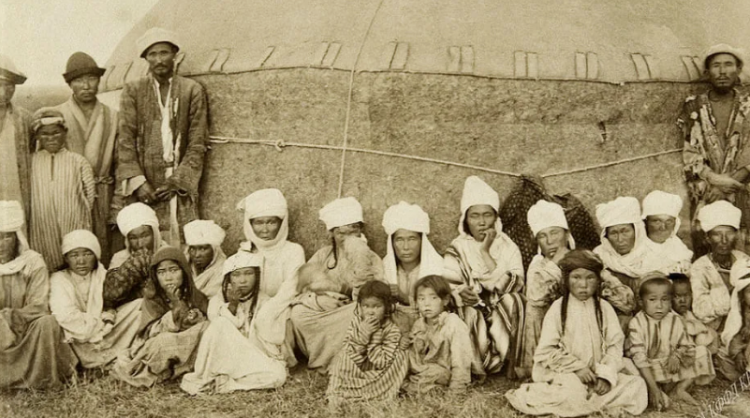
Sanjiра is an oral chronicle that reflects the genealogical branches of individual clans, tribes, and the nation as a whole, as well as historical events of past eras. As one of the important ideological institutions in the absence of a unified state administration, sanjira, along with customary law (adat, park), was related to the regulation of social relationships in society.
In terms of structure and content, they encompassed all tribes, clans, and ethnic groups that formed the modern Kyrgyz people. Sanjira represented a socio-political and ideological model of the nomadic world, uniting various clan communities within a dual ethnopolitical organization.
The simplicity of this model lay in its accessibility to the ordinary person, who could determine their place in society based on the genealogy of their ancestors. Typically, in a patriarchal family, knowledge of genealogy up to the seventh generation was required; this was the norm. Knowing the genealogy of one's ancestors as a branch of a particular clan or tribe allowed individuals to identify themselves with a specific group of uruk and uruu.
Genealogical legends included stories about the deeds of close ancestors, their feats, and related events, as well as information about the origin of the clan and tribe.
Compiling oral historical narratives about one's ancestors is traditional. Every adult person had the necessary minimum knowledge about their great-grandparents. Elders would recount these stories in the company of close relatives and tribesmen, while fathers would share them with their sons, forming their initial understanding of the historical past of the clan. There were experts in sanjira, known as sanjirany, who specifically collected genealogical legends and were well-informed. They were usually distinguished by their natural intelligence and good memory, and the people referred to them as "kuyma kulak," meaning "the one with a good memory." Such individuals, although they did not hold a special status, were respected by the people for their deep knowledge of history, genealogy, and legendary events concerning both close and distant ancestors.
The genealogical information was orally transmitted by the expert to another person. It was required that those narrating the sanjira did not allow distortions or deviations concerning real genealogical connections and historical events. If the accuracy of the narrative, as prescribed by traditional canons, was not fully adhered to, the people themselves would dismiss such storytellers, disapproving of their accounts. Therefore, the genealogist adhered only to the reliable version of the sanjira received from the primary source. Accounts of the history of individual clans and tribes were approached with great caution, as it was understood that glorifying some clans or belittling others could not lead to the consolidation of the entire nation. Thus, objectivity and stability of the transmitted information were ensured, preserving oral historical knowledge. It was precisely the most objective version of the sanjira that was accepted by society and disseminated among the people.
However, there were instances when the sanjira had a biased character. Conflicts and disagreements between individual clans and tribes were not always interpreted objectively. In such cases, a sanjirachi from one tribe or clan might present an event related to relationships between groups in a distorted manner, prioritizing clan interests.
Covering all events of legendary and historical significance, sanjira became a kind of ideology of nomadic society. They served as the foundation and orientation for kinship and ethnic ties within the hierarchical structure of society, from patriarchal families to tribes.
Sanjiра ensured clan and tribal solidarity, and based on it, the people united in difficult times. According to customary law, a person considered a member of a given clan was expected to bear all burdens and hardships together with other members. Thus, genealogy organized a system of hierarchical subordination among various levels of kinship communities: the patriarchal family "bir atanyn baldary" was part of a specific clan "uruk," which, in turn, was part of an "uruu" or tribe that belonged to a larger clan-tribal union. In this context, the history and genealogy of individual clans and tribes intertwined, complementing and creating a unified information base in accordance with the demands of traditional society.
The Governance System Among Various Kyrgyz Tribes














































